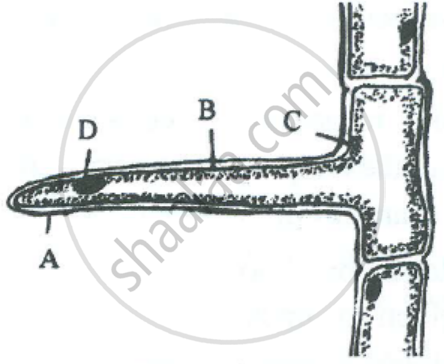Advertisements
Advertisements
Question
Match the items in column I with those in column II
| Column I | Column II | ||
| (a) | Xylem | (i) | semi - permeable |
| (b) | Phloem | (ii) | permeable |
| (c) | Cell membrane | (iii) | downward flow of sap |
| (d) | Root pressure | (iv) | upward flow of water |
| (e) | Cell wall | (v) | guttation |
Solution
| Column I | Column II | ||
| (a) | Xylem | (iv) | upward flow of water |
| (b) | Phloem | (iii) | downward flow of sap |
| (c) | Cell membrane | (i) | semi - permeable |
| (d) | Root pressure | (v) | guttation |
| (e) | Cell wall | (ii) | permeable |
APPEARS IN
RELATED QUESTIONS
Draw a magnified view of the root-hair, and describe, how it helps in the absorption of water from the soil.
What are root hair? Mention the function performed by the root hair.
Mention whether the following statement is true or false. Correct the false statement by altering the last word only.
The cell wall of the root cell is a differentially permeable membrane.
Concentration of mineral nutrient elements is higher inside the root hairs than in the surrounding soil. How do roots take them in from the soil?
The diagram given below represents the results of an experiment conducted on two freshly taken leafy shoots of a herbaceous plant. The lower ends of the shoots dip in ordinary water.
(i) What is the aim of the experiment?
(ii) Some parts of the stem in both the shoots have been removed. Name the conducting tissue in shoot (a) and in shoot (b) that has been removed.
(iii) What are the results of this experiment?

The diagram below represents a layer of epidermal cells showing a fully grown root hair. Study the diagram and answer the questions that follow:

Mention one distinct difference between the parts labelled A and B.
Draw a cross-section of root showing association of soil particles with root hairs.
Multiple Choice Question:
Water will be absorbed by the root hairs when:
A thin strip of epidermal cells of a leaf was observed in a drop of water. They all looked turgid and normal.
(a) Draw a diagram of such a cell.
(b) Draw a diagram of a cell if this strip is transferred to a strong concentrated solution of sugar. What is term used for the effect on the cells ?
Part of the root that absorbs water from the soil is ______.
